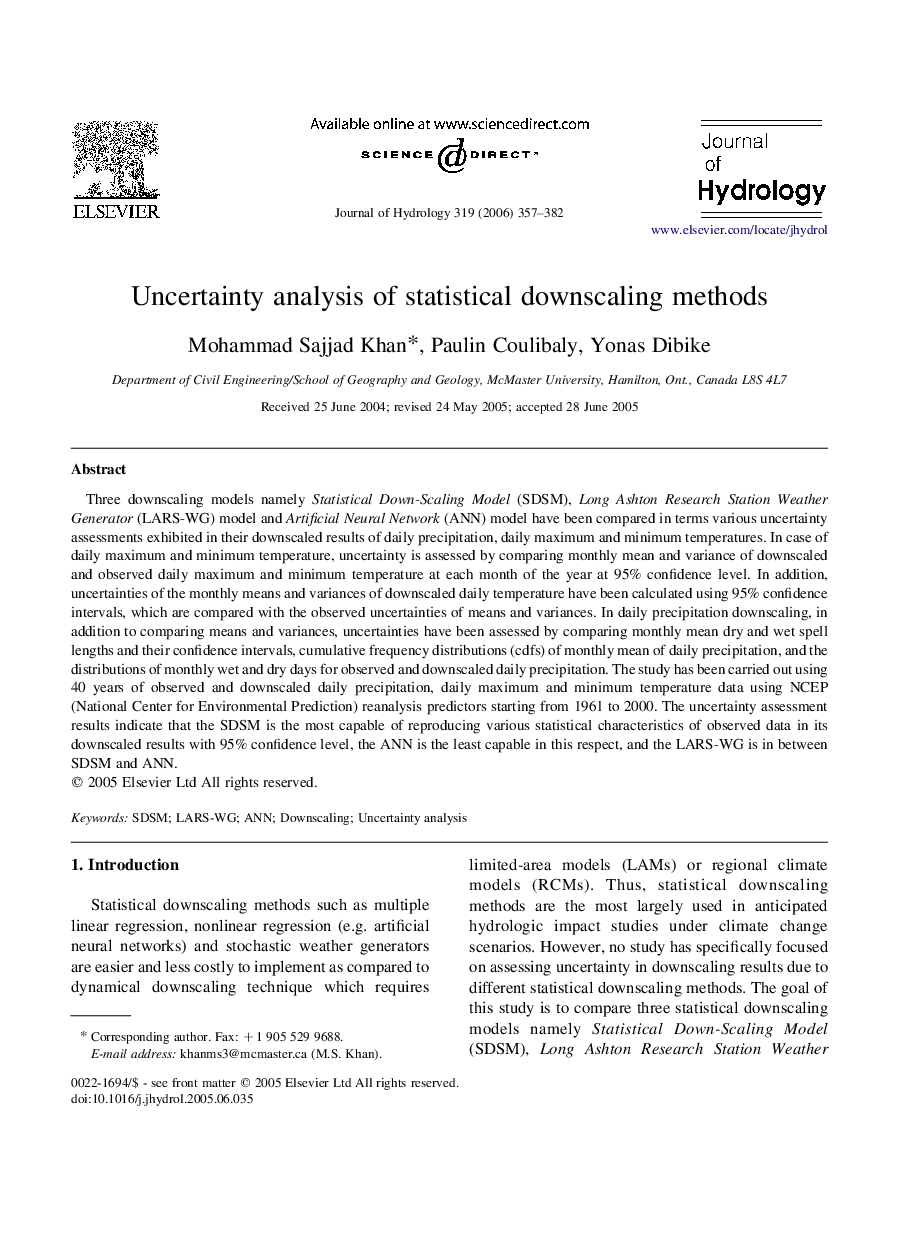| Article ID | Journal | Published Year | Pages | File Type |
|---|---|---|---|---|
| 4580835 | Journal of Hydrology | 2006 | 26 Pages |
Three downscaling models namely Statistical Down-Scaling Model (SDSM), Long Ashton Research Station Weather Generator (LARS-WG) model and Artificial Neural Network (ANN) model have been compared in terms various uncertainty assessments exhibited in their downscaled results of daily precipitation, daily maximum and minimum temperatures. In case of daily maximum and minimum temperature, uncertainty is assessed by comparing monthly mean and variance of downscaled and observed daily maximum and minimum temperature at each month of the year at 95% confidence level. In addition, uncertainties of the monthly means and variances of downscaled daily temperature have been calculated using 95% confidence intervals, which are compared with the observed uncertainties of means and variances. In daily precipitation downscaling, in addition to comparing means and variances, uncertainties have been assessed by comparing monthly mean dry and wet spell lengths and their confidence intervals, cumulative frequency distributions (cdfs) of monthly mean of daily precipitation, and the distributions of monthly wet and dry days for observed and downscaled daily precipitation. The study has been carried out using 40 years of observed and downscaled daily precipitation, daily maximum and minimum temperature data using NCEP (National Center for Environmental Prediction) reanalysis predictors starting from 1961 to 2000. The uncertainty assessment results indicate that the SDSM is the most capable of reproducing various statistical characteristics of observed data in its downscaled results with 95% confidence level, the ANN is the least capable in this respect, and the LARS-WG is in between SDSM and ANN.
